A selection of pictures of GWR point rodding
by Tim Venton
This page gives a selection of Tim Venton's pictures he took in preparation for his model of Clutton
I found I could never have too many photos of point rodding, here is a selection I found useful when setting out the rodding at Clutton.
You may ask why this is all so important. My interest is in modelling the prototype. By looking at how the prototype makes interlocking work, I can go some way towards improving the reliability of my models. How many models have you seen where the operator has to 1) set the route, 2) set the section switches, 3) set the signals (if fitted!). And then that person wonders why a train falls off, because of some conflict over the route. The prototype cannot allow that. And I think that is what I try to aim for in looking at incorporating some of these ideas into my model. Obviously, I cannot have actual point detection in 4mm scale, the forces involved are to small. But I can try to incorporate some level of secondary detection on the points.
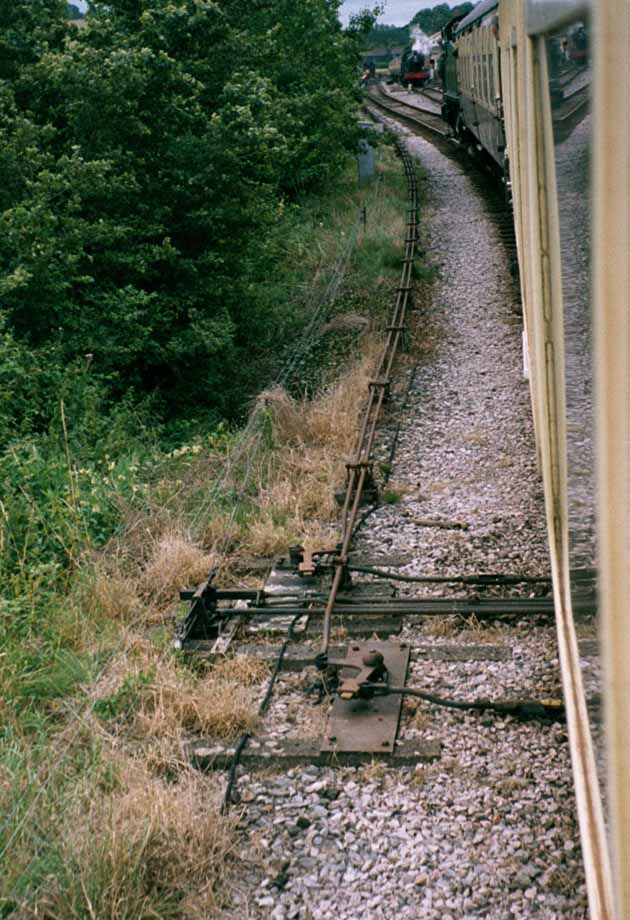 |
Rodding at the down end facing point at Williton (West Somerset Railway). This is a later pattern facing point detection, as it has 4 rods going to the detector, 1 from each of the point blades, 1 from the lock, and one acting as a spacer (July 2000).
Below is a shot of Williton from closer up. |
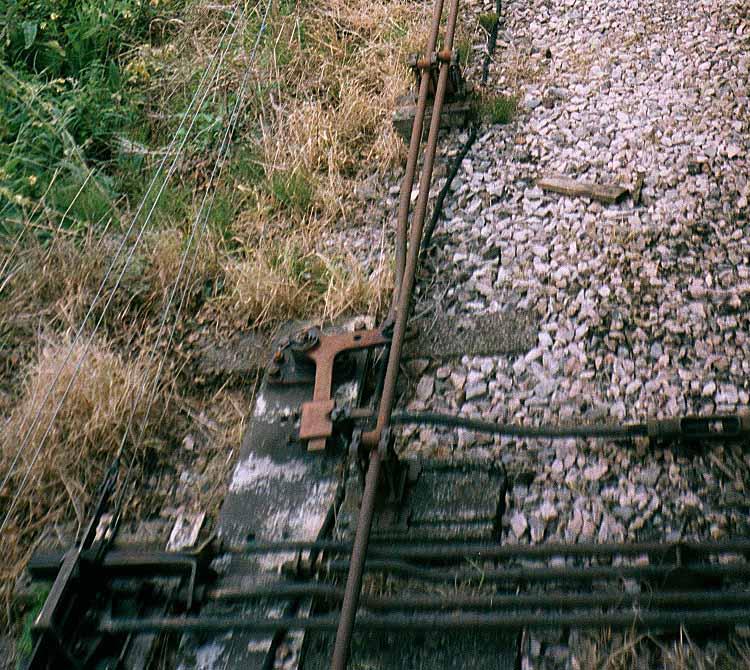 |
A comparison of the GWR-pattern round rodding and the later square section on the West Somerset Railway
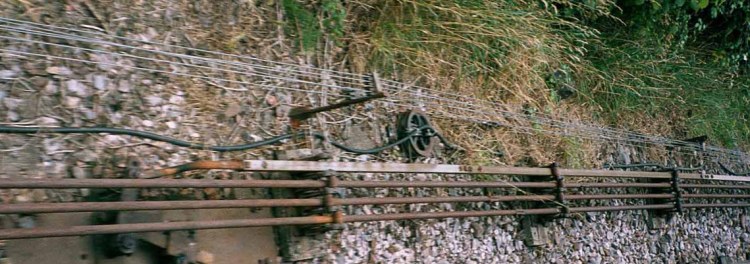
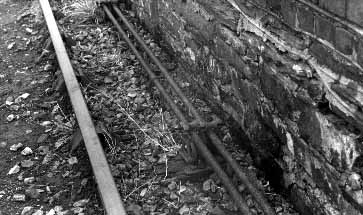 |
Standard stools mounted on wooden supports (Festiniog, October 1975). |
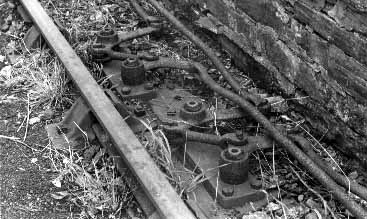 |
Compensator mechanism, next to the platform at Ffestiniog. |
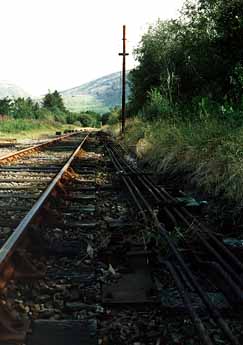 |
Compensator mechanism at Ffestiniog. Note how close the rodding is to the track. A nice shot of the rusty state of the rodding, but remember this shot was taken in 1987, approx 25 years after the box had shut. This is round rodding, very rare these days. To my knowledge, there are only a couple of sites left with round rodding, the most extensive is at Williton as above. |
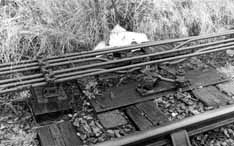 |
The same site, in September 1978. Note that the rodding stools are mounted on wooden supports. Quite rare. Mostly the supports are of concrete. The compensator is mounted on a steel plate, bolted to concrete supports. |
Point rodding at Tywyn, where it crosses under the down relief siding. I had a lot of problems coming across decent photographs of this situation. (August 1972)
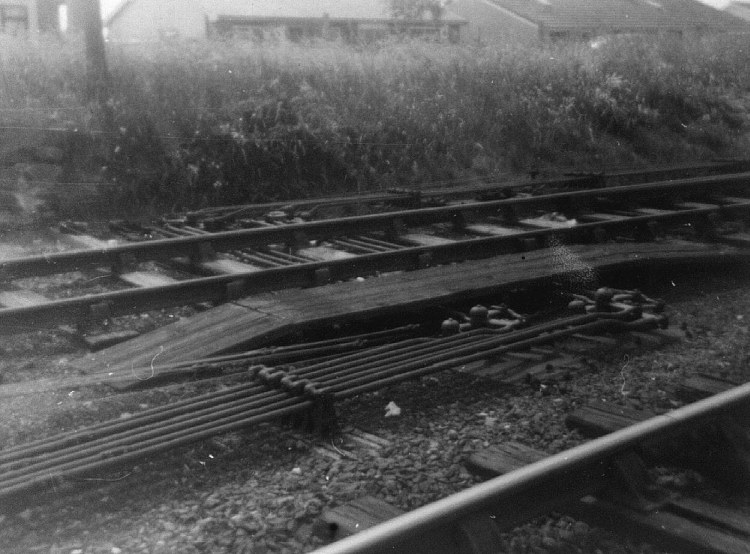
 |
One of those items that has all but disapeared, the locking bar for facing points. I have seen very few detail shots of this item, so I thought it would be worth including a few here. |
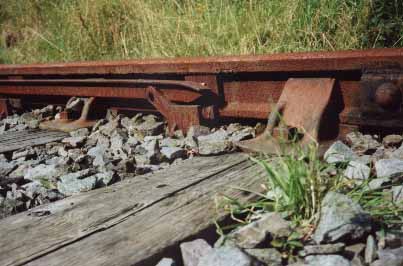 |
Note the curved end. |
 |
The spring-loaded mechanism that operates the bar. The bar is mounted on a cam principle – as the facing point lock is moved, so the bar moves up to rail height. Should an item of rolling stock happen to be on the bar, it will be impossible for the signalman to release the lock. These days it is done by track circuits, in fact this point lock at Blue Anchor (seen here in 1975) has been replaced with a motor. |
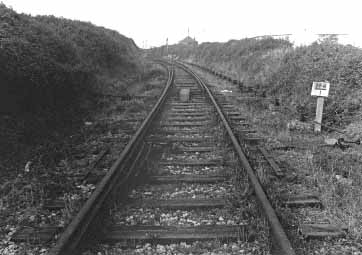 |
Stepping further back, the spring mechanism is on the left. A crank is on the right, rodding comes from the facing point lock lever, down the dodding run the this crank. The movement runs down the locking bar to the point lock itself, shown on the next page. |
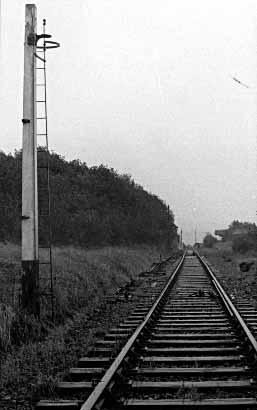 |
A long shot showing the relationship of the home signal to the bar. It is at the end. This is the up home at Ffestiniog station, the signal box is behind the bushes on the left. I would point out that the bar should be as long as the wheelbase of your longest item of rolling stock, lengths have been quoted of 40' up to 50'6". If you can, try counting sleepers (1978). |
| Ffestiniog again in 1987. The home signal post has gone by now. Note the arrangement of cranks onto the bar at this end. |
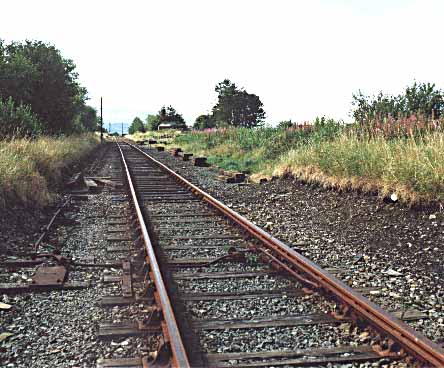 |
This is the rodding at Blue Anchor, taken while the railway was closed (1975). This has 1 rod to each blade, 1 rod to the lock mechanism, but no tie rod to the detector. For a GWR period layout, this would be the appearance.
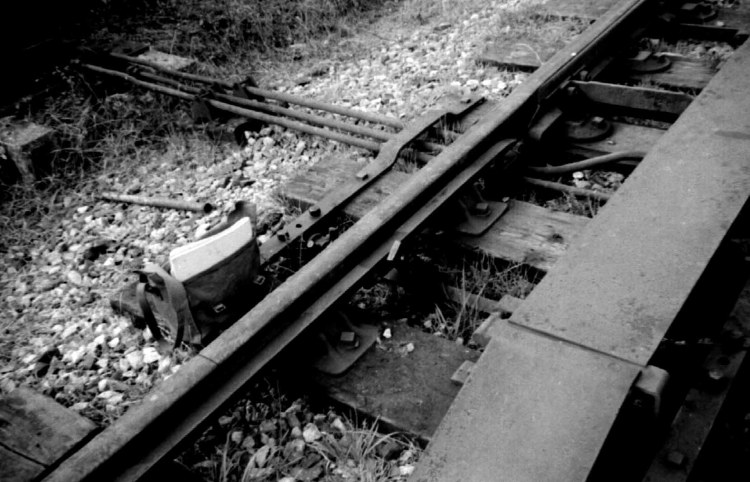
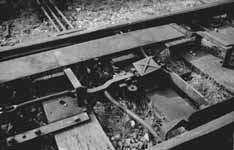 |
This is what is under the steel cover. The joggle in the horizontal bar moves the lock detector sideways. All this has been removed, the preservation society have installed motor operation on this point. |
Overhead shot showing the end of the bar by the toe of the point, Tywyn 1978.
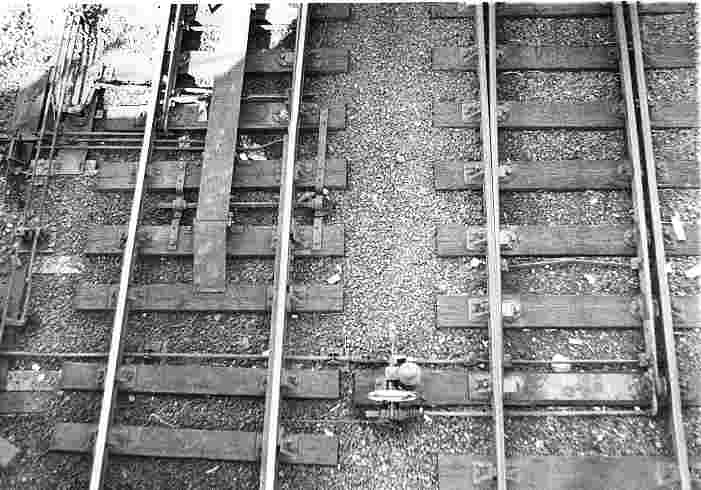
Photos showing how rodding enters signal boxes are rare. Here are two views of Blaenau Ffestiniog, long after closure, 6 October 1975.
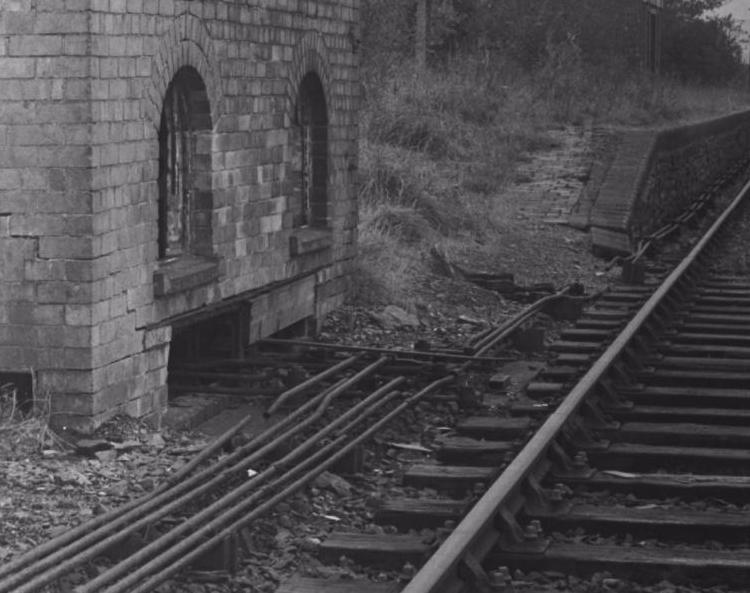
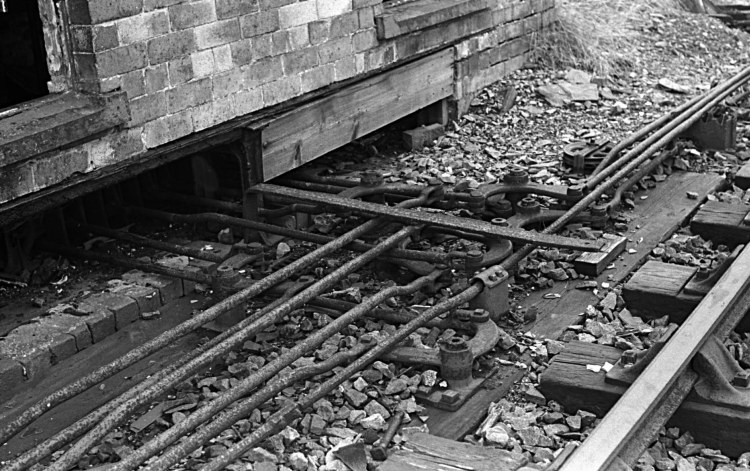
|


















